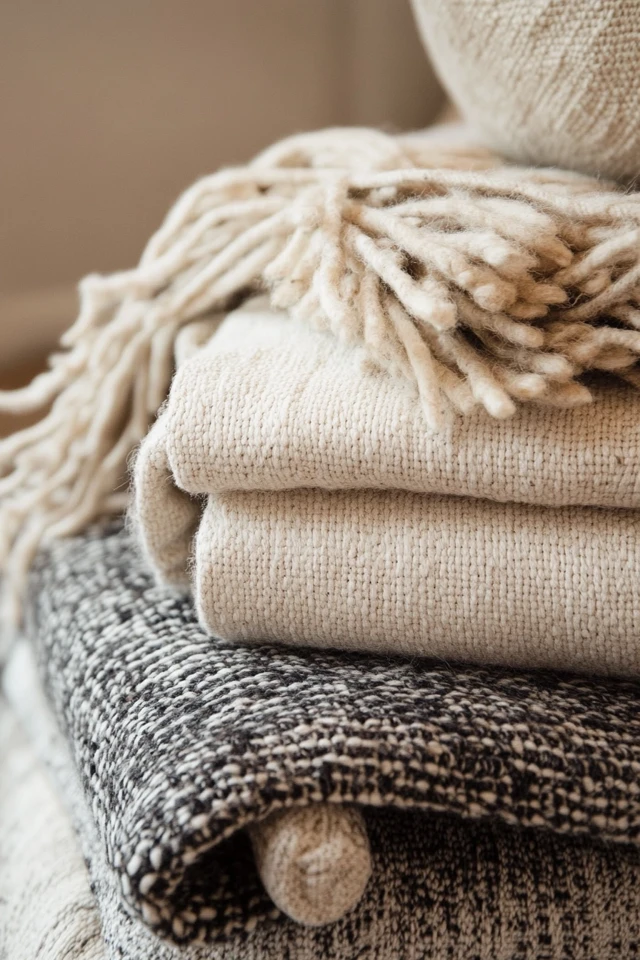Introduction
Scandinavian design is synonymous with simplicity, functionality, and minimalism. It thrives on clean lines, neutral tones, and a calming sense of balance. However, incorporating texture is key to transforming a Scandinavian-inspired space from minimalist to cozy and inviting. The right textures—whether they’re found in soft textiles, natural materials, or subtle patterns—add depth and warmth without compromising the clean aesthetic.
I remember the first time I tried to embrace Scandinavian design in my living room. While I loved the light wood furniture and neutral palette, the room felt stark and cold. Adding texture through a chunky knit blanket, a jute rug, and linen curtains completely transformed the space. It retained its minimalist charm but now felt welcoming and layered.
In this guide, I’ll walk you through how to use texture in Scandinavian spaces effectively. Whether you’re designing a living room, bedroom, or dining area, these tips will help you add warmth and personality without overwhelming the simplicity that defines Nordic design.
The Perfect Design for You
Using texture in Scandinavian spaces is perfect for anyone who loves the understated elegance of this style but wants to make their space feel more inviting and lived-in. It’s especially well-suited for creating balance in rooms with lots of neutral tones, ensuring the space doesn’t feel flat or overly minimal.
This approach works in both small apartments and large homes, offering a way to personalize your decor while maintaining the core principles of Scandinavian design: simplicity, functionality, and beauty.
Why Texture Works So Well in Scandinavian Spaces
Texture is a powerful tool in Scandinavian interiors because it adds visual interest and tactile warmth to an otherwise minimalist design. Here’s why texture is essential:
- Balance:
- Texture prevents neutral color schemes and minimalist furniture from feeling too stark or clinical, adding a sense of harmony to the space.
- Warmth:
- Soft textiles, woven materials, and natural finishes bring warmth to the clean lines and cool tones typical of Scandinavian interiors.
- Depth:
- Layers of texture create visual depth, making the space feel dynamic without the need for bold colors or busy patterns.
- Connection to Nature:
- Natural textures like wood, wool, and stone align with the Scandinavian focus on bringing the outdoors in.
- Subtle Contrast:
- Textures add contrast in a way that feels understated and cohesive, preserving the minimalist aesthetic.
- Timeless Appeal:
- Unlike trends that come and go, textured elements like linen, wood, and wool are timeless, ensuring your design stays stylish for years to come.
By incorporating texture thoughtfully, you can elevate your Scandinavian space while keeping it true to its roots.
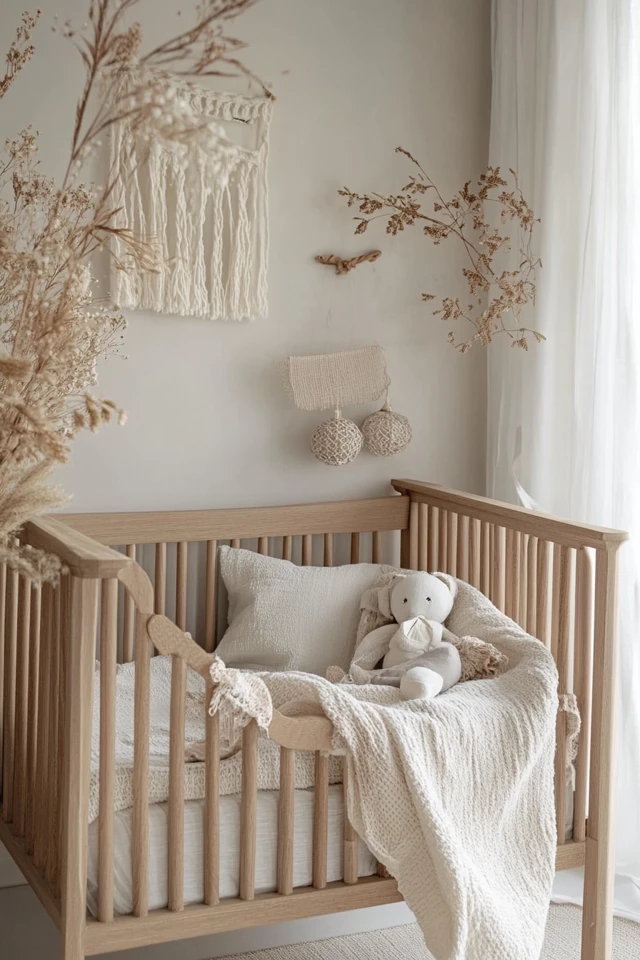
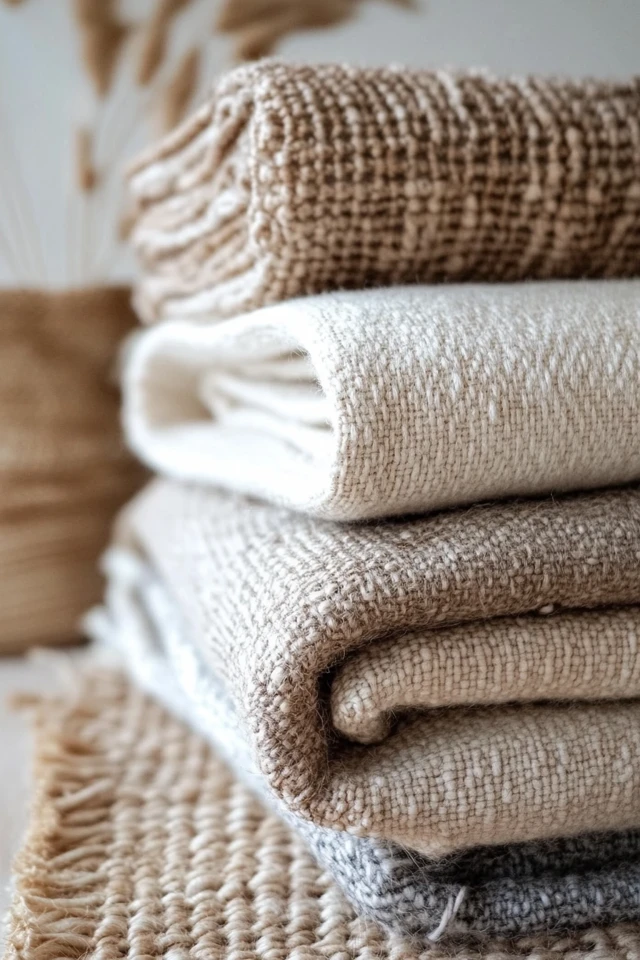
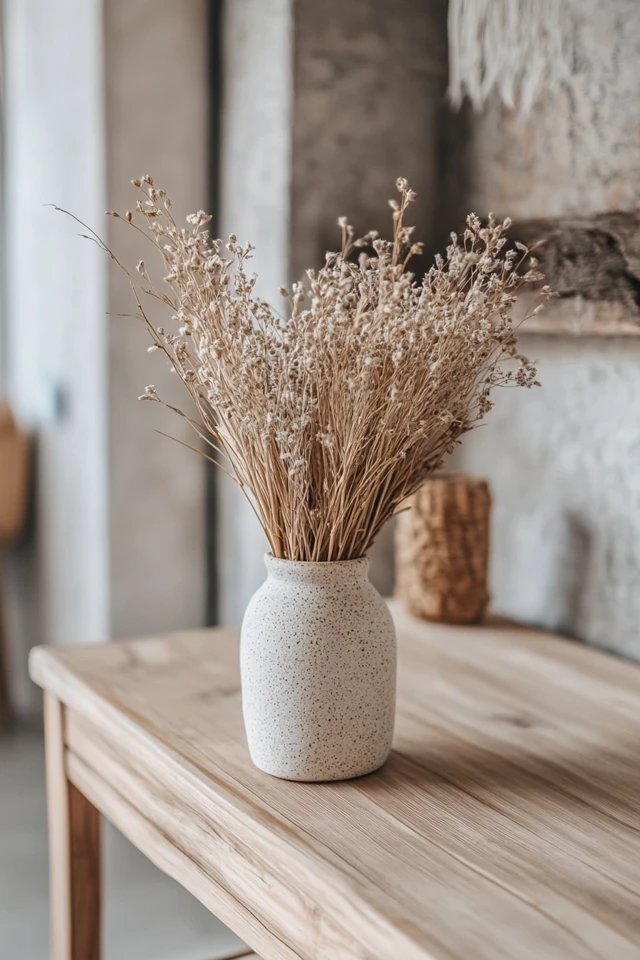
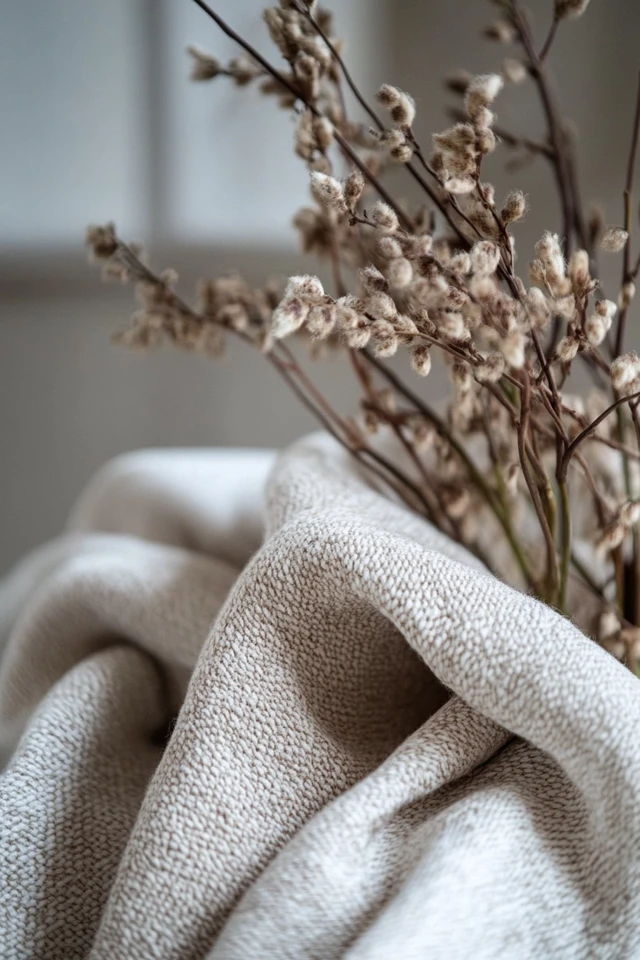
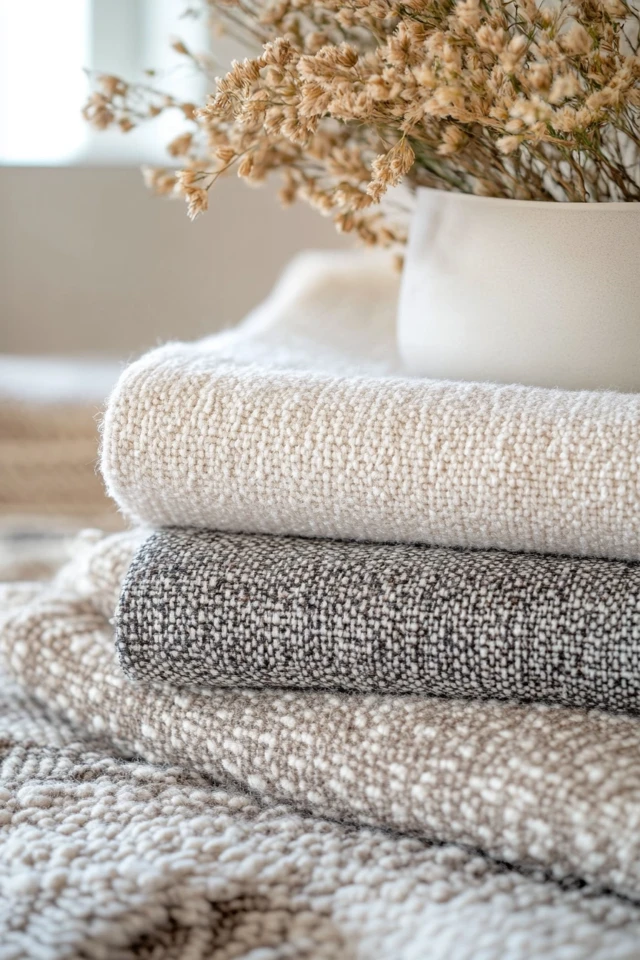
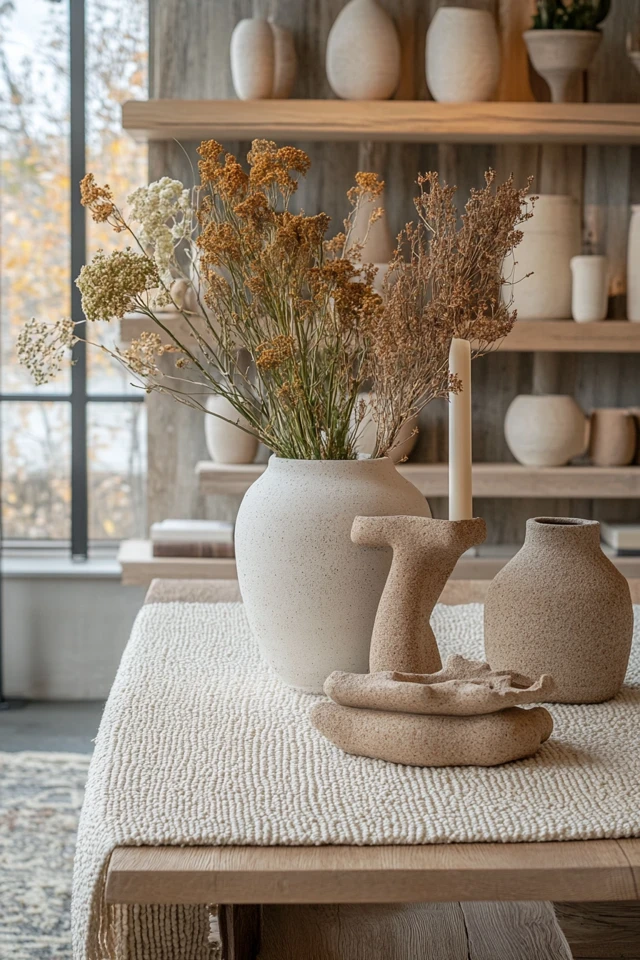
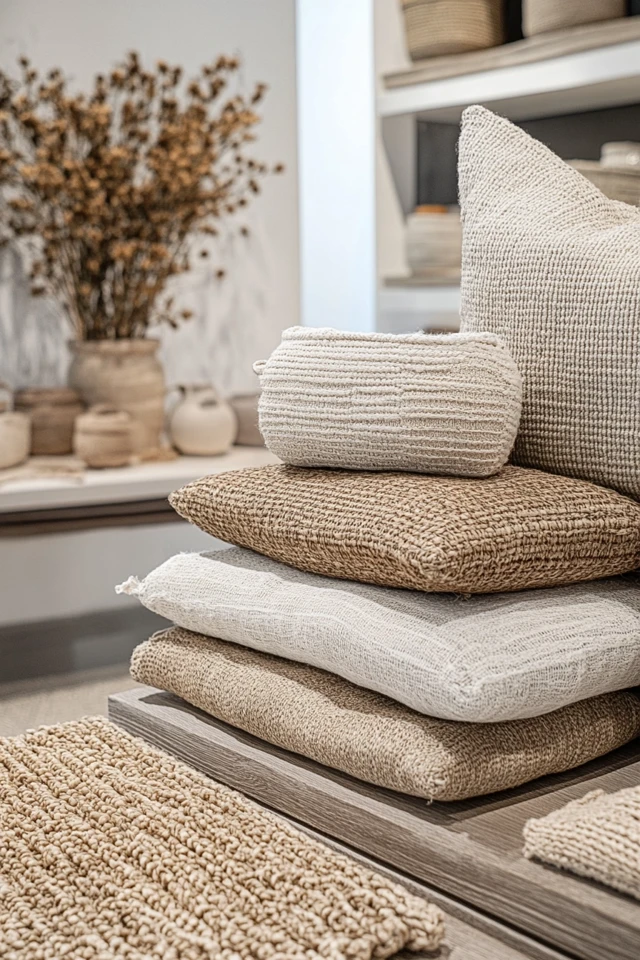
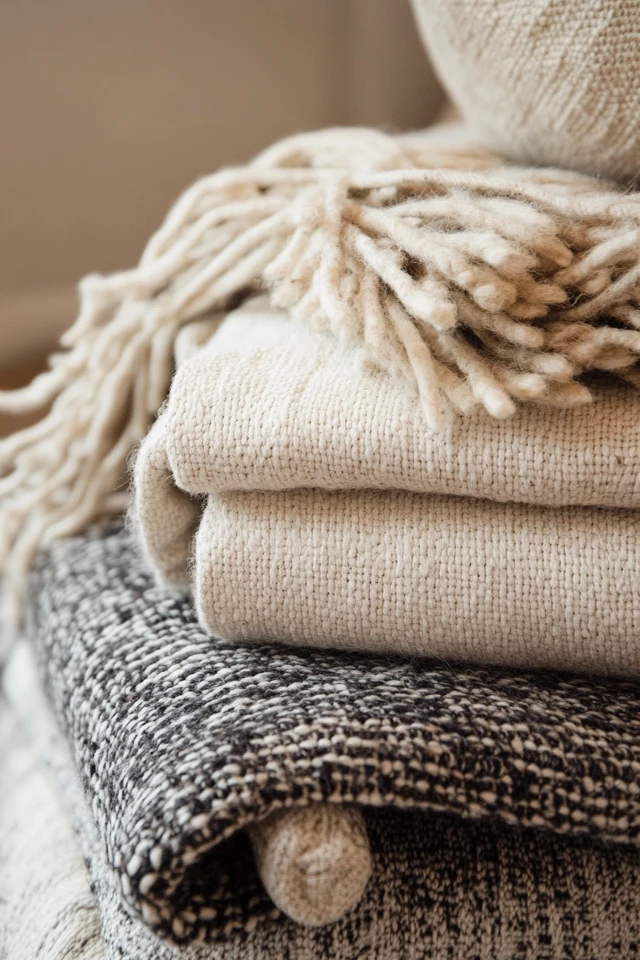
How to Use Texture in Scandinavian Spaces Without Overwhelming
1. Start with Natural Materials
- Incorporate wood, stone, and woven materials as foundational elements in your space.
- Choose light or medium wood tones, such as oak or birch, to maintain the airy, Nordic aesthetic.
2. Layer Soft Textiles
- Add wool blankets, linen throws, and cotton cushions to sofas, chairs, and beds.
- Stick to neutral or muted tones, such as gray, beige, or white, to keep the look cohesive.
3. Use Rugs to Ground the Space
- A jute, sisal, or wool rug can anchor the room while adding texture underfoot.
- Opt for a natural fiber rug with a simple weave or a subtle pattern to enhance the minimalist style.
4. Incorporate Subtle Patterns
- Use small-scale patterns like herringbone, stripes, or grid designs in textiles or wallpapers.
- Limit patterned items to one or two per room to avoid overwhelming the space.
5. Add Greenery
- Plants bring organic texture and a connection to nature.
- Use ceramic or woven planters to complement the room’s natural materials.
6. Choose Textured Furniture
- Opt for furniture with tactile finishes, like rattan chairs, a boucle armchair, or a woven cane cabinet.
- Pair textured furniture with smoother surfaces, like metal or glass, for contrast.
7. Introduce Stone or Concrete
- Use stone or concrete for coffee tables, planters, or countertops to add an industrial edge.
- Pair these hard textures with soft fabrics to create balance.
8. Incorporate Woven Baskets
- Use wicker or seagrass baskets for storage, adding texture while keeping the room organized.
9. Use Matte and Glossy Finishes Together
- Combine matte finishes (like painted walls) with glossy or reflective surfaces (like mirrors or glass) for a subtle play of light and texture.
10. Focus on One or Two Statement Pieces
- A chunky knit throw or a textured area rug can serve as a focal point without overwhelming the space.
- Avoid layering too many bold textures in one area to maintain the minimalist aesthetic.
FAQ Section
1. Can I use bold textures in Scandinavian spaces?
Yes, but use them sparingly. A single statement texture, like a chunky knit blanket or a woven chair, can add interest without detracting from the minimalist design.
2. What are the best fabrics for Scandinavian interiors?
Natural fabrics like wool, linen, cotton, and leather work best, as they align with the Scandinavian focus on sustainability and simplicity.
3. How do I avoid clutter when adding texture?
Stick to a neutral color palette and limit the number of textured items in each room. Choose pieces that are both functional and decorative.
4. Can I mix different textures in one space?
Absolutely! Combining soft and hard textures—like a linen sofa with a concrete coffee table—creates a balanced, dynamic look.
5. How do I incorporate texture into a small space?
Focus on one or two key elements, like a woven rug or textured curtains, to avoid overcrowding the room.
Variations
- Modern Scandinavian Texture
- Use sleek finishes like polished wood and smooth leather, combined with subtle textures like boucle upholstery or matte ceramics.
- Rustic Scandinavian Texture
- Opt for distressed wood, chunky knits, and sheepskin throws for a cozy, rustic vibe.
- Minimalist Scandinavian Texture
- Stick to smooth surfaces and small-scale textures, such as fine linen or tightly woven fabrics, for a minimalist look.
- Eco-Friendly Scandinavian Texture
- Use sustainable materials like organic cotton, recycled wool, or bamboo for an environmentally conscious approach.
- Boho-Scandinavian Texture
- Combine Nordic textures with bohemian elements like macrame, layered rugs, and patterned cushions for an eclectic feel.
How to Showcase It
- Living Rooms: Add a wool rug, linen curtains, and a boucle armchair to create a cozy yet refined space.
- Bedrooms: Layer a linen duvet cover, knit blankets, and textured throw pillows for a serene and inviting bed.
- Dining Areas: Use woven placemats, a linen tablecloth, and ceramic dishes to add subtle texture to the dining table.
- Home Offices: Incorporate a natural wood desk, a leather chair, and a small woven basket for a tactile, Scandinavian-inspired workspace.
- Bathrooms: Add texture with waffle-knit towels, a jute bath mat, and a wooden stool or tray.
Occasions to Feature It
- Home Makeovers: Add texture to refresh and modernize your Scandinavian-inspired space.
- Seasonal Updates: Use heavier textures like wool and faux fur for winter, and lighter fabrics like linen for summer.
- Small Space Solutions: Incorporate texture through textiles and accessories to add depth without overcrowding.
- Loft Living: Balance the industrial elements of a loft with soft, natural textures.
- Eco-Friendly Design: Use sustainable textures like bamboo or organic cotton to create an eco-conscious Scandinavian space.
Conclusion
Incorporating texture is an essential step in creating warm, inviting Scandinavian spaces. By layering soft textiles, natural materials, and subtle patterns, you can add depth and character without overwhelming the clean, minimalist aesthetic.
Ready to transform your space? Start with a few key textured elements, like a wool rug or linen curtains, and build from there. Share your results, inspire others, and enjoy the cozy elegance of a textured Scandinavian design. Here’s to creating a home that’s as comfortable as it is beautiful!

